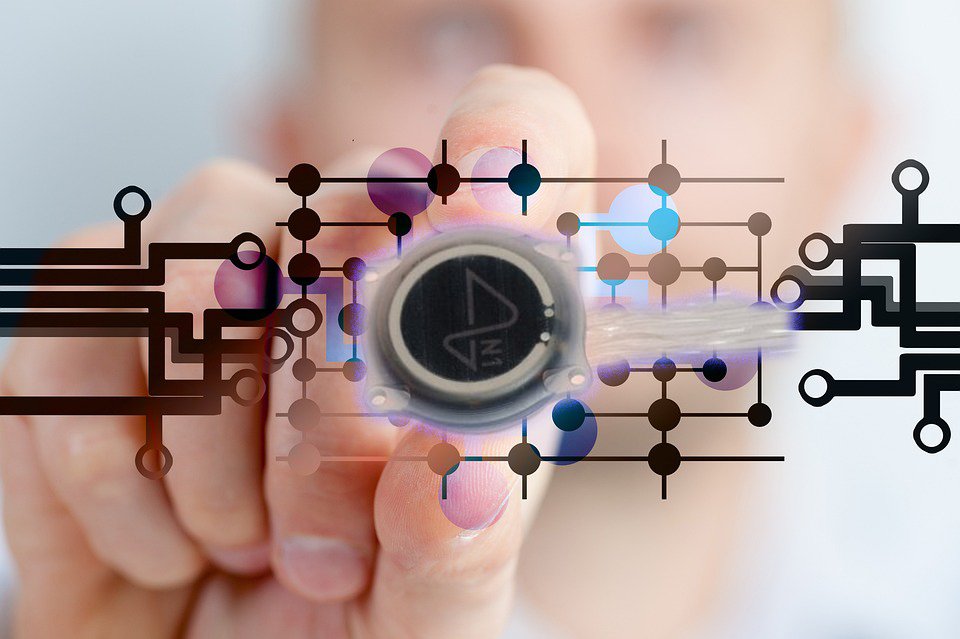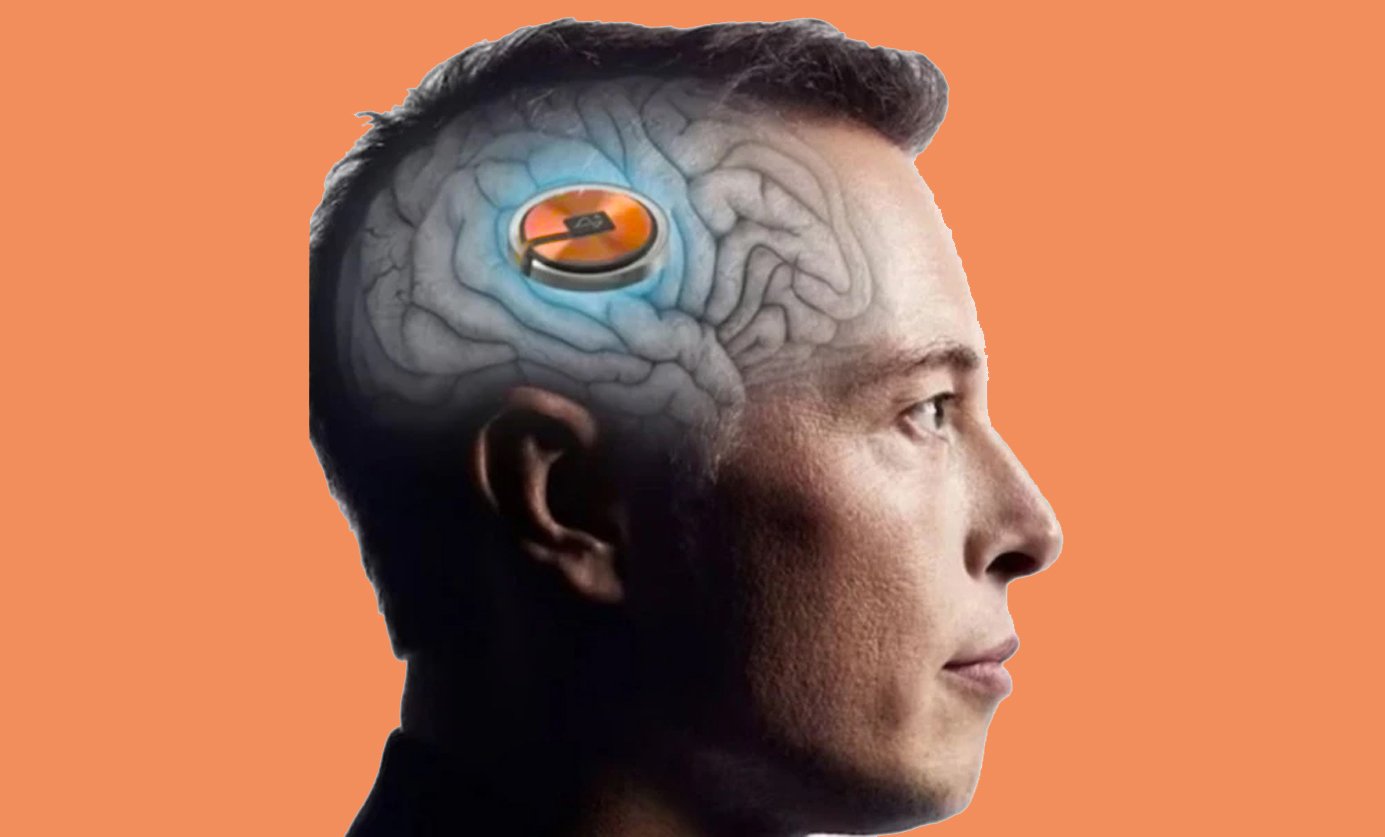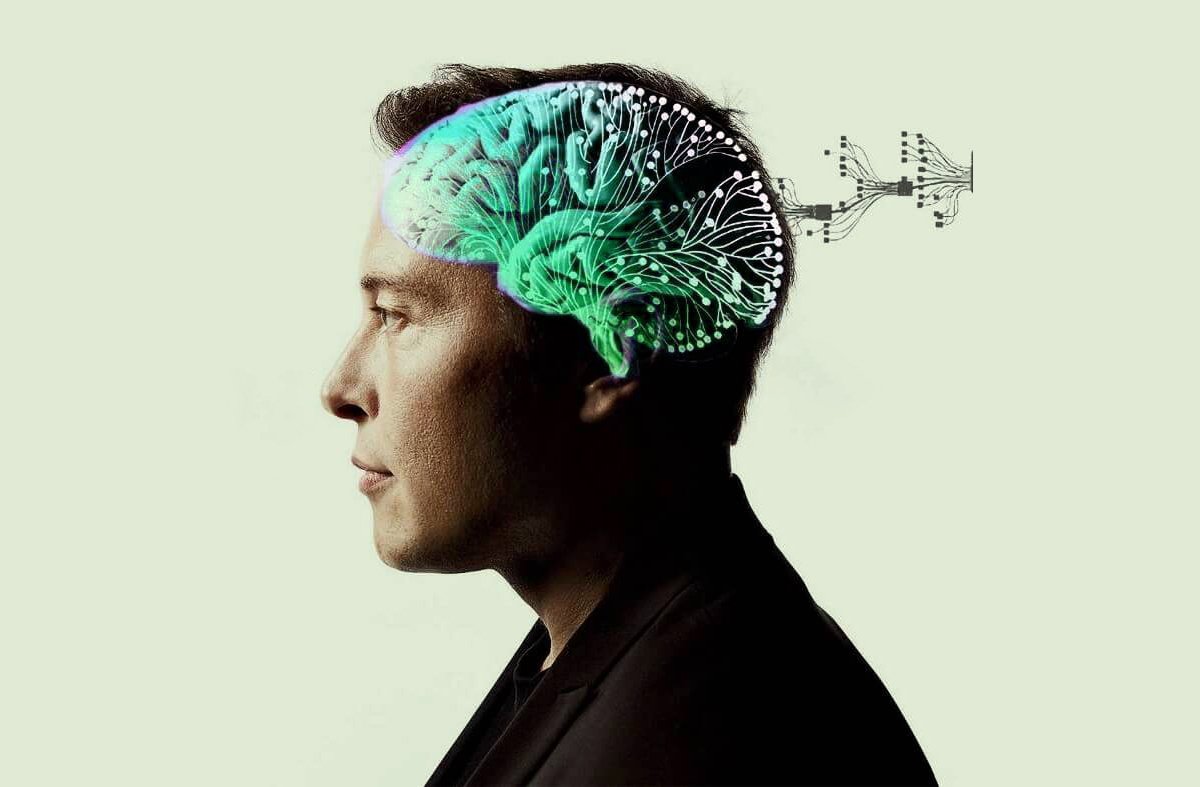
Neuralink the startup company of the owner of Elon Musk Tesla company implanted a chip in the human brain.
Neuralink is a neuro-technology company founded by Elon Musk and others in 2016. The company is headquartered in San Francisco, California, and focuses on developing implantable brain–machine interfaces (BMIs). Its ambitious goal is to enable humans to communicate directly with computers and to enhance cognitive capabilities, among other applications.
The technology being developed by Neuralink involves ultrathin threads that can be implanted into the brain to detect neural activity. These threads are significantly thinner than a human hair and require a sophisticated robot for the implantation process. The idea is that these threads could read and write neural signals, theoretically enabling a wide range of applications, from treating neurological disorders like Parkinson’s disease and epilepsy to facilitating direct brain to computer communication.
One of the key components of Neuralink’s technology is a chip known as the “Link.” This chip is intended to process, stimulate, and transmit neural signals, allowing for communication between the brain and external devices. The ultimate vision is to create a seamless interface between humans and machines, which could lead to advancements in medical treatments, cognitive enhancement, and even new modes of communication.
As of my last update, Neuralink had conducted several animal trials to test the safety and efficacy of their technology. The company had shown videos of animals, such as pigs and monkeys, with Neuralink devices implanted in their brains, demonstrating the ability to track neural activity in realtime and, in some demonstrations, control interfaces without physical movement.
However, Neuralink’s work is not without controversy and challenges. The development of brain computer interfaces raises significant ethical, privacy, and security concerns. The invasive nature of the technology, requiring brain surgery, also presents considerable medical risks. Regulatory approval is another significant hurdle, as the company must demonstrate that its devices are safe and effective for human use.
Despite these challenges, Neuralink’s work is part of a growing field of research and development in neural technologies, with the potential to revolutionize treatments for neurological conditions and change the way we interact with technology. The company’s progress is closely watched by both the scientific community and the public, with many eagerly awaiting further developments.
Elon Musk, the CEO of Tesla and founder of Neuralink, had not publicly announced the successful implantation of a Neuralink chip in a human brain. While Neuralink has made significant progress in developing its brain machine interface technology and has conducted several high profile animal trials, human trials were still in the planning and regulatory approval stages.
Neuralink has expressed its intention to conduct human trials, aiming to treat neurological conditions and injuries and, eventually, to enable symbiosis between humans and artificial intelligence. The company has been in the process of seeking approval from the U.S. Food and Drug Administration (FDA) to begin these trials. Musk has been optimistic about the timeline for human trials in various public statements, suggesting that they could start relatively soon, but exact dates and details have depended on regulatory approval and the readiness of the technology.
Given the complex ethical, technical, and regulatory landscape that surrounds implanting devices in the human brain, Neuralink’s move towards human trials is subject to rigorous scrutiny. The company must demonstrate that its devices are safe and effective for human use, a process that involves extensive testing and regulatory review.
It’s worth noting that the field of brain machine interfaces (BMIs) is not new and involves many researchers and companies worldwide working on similar technologies for various applications, including medical treatments and enhancing human capabilities. However, Neuralink’s approach, which involves flexible threads and a high degree of connectivity with the brain, is among the most ambitious.
For the most current information on Neuralink’s progress, including any updates on human trials, it’s best to consult the latest news releases and official announcements from Neuralink and regulatory bodies.
1. What is the Neuralink device?

Neuralink device, often referred to as the “Link,” is a highly advanced brain machine interface (BMI) developed by Neuralink Corp., a company founded by Elon Musk and others. This device represents a cutting edge effort to create a direct interface between the human brain and computers or external devices. The primary components and functionalities of the Neuralink device, as presented in various updates and demonstrations, include:
- Ultrafine Threads: The Neuralink system uses very thin and flexible threads, thinner than a human hair, which are inserted into the brain’s outer layer (the cortex). These threads contain electrodes that can detect neural activity (brain signals) and, potentially, stimulate brain cells. The insertion of these threads is proposed to be done using a sophisticated, precision robotic apparatus to ensure accuracy and minimize damage to brain tissue.
- The Link: This is a small, coin sized computing device that serves as the interface between the brain and external technologies. The Link processes, stimulates (if needed), and transmits neural signals. It’s designed to be implanted in the skull, with the threads extending into the brain. The Link communicates wirelessly with computers or other devices, allowing for the transmission of neural data in real-time and potentially enabling control of computers or prosthetic devices with thought.
- Charging and Communication: The Neuralink device is designed to be charged wirelessly, eliminating the need for physical connections or batteries that require surgical replacement. Wireless communication also means that the user can interact with computers or other connected devices without physical interfaces, purely through thought.
- Applications: The initial focus of Neuralink is on medical applications, particularly for individuals with paralysis or other neurological conditions. The technology aims to restore functions such as mobility, communication, and independence by bypassing damaged areas of the nervous system. Beyond medical applications, Neuralink’s vision includes enhancing human cognition, enabling direct brain to computer communication, and, more futuristically, facilitating a symbiotic relationship between humans and artificial intelligence.
- Surgical Installation: Neuralink has developed a robotic surgeon designed to perform the delicate task of inserting the threads into the brain with minimal harm and precision. This robot is essential to the practical application of Neuralink’s technology, aiming to make the surgery as safe and minimally invasive as possible.
As ambitious as it is, Neuralink’s technology is still largely in the development and testing phase, with significant hurdles to overcome, especially regarding regulatory approval for human trials. The potential of such a device spans from revolutionary medical treatments to enhancing human capabilities, but it also raises ethical, safety, and privacy concerns that society will need to address.
2. will capable to connecting the phone directly to the brain?

One of the long-term goals of the Neuralink device is to enable users to connect their brains directly to their smart phones, computers, and other electronic devices without the need for physical interfaces like keyboards, mice, or touch screens. The idea is to facilitate communication between the brain and external devices through thought alone; leveraging the brain machine interface (BMI) technology that Neuralink is developing.
By capturing and interpreting neural signals with the implanted threads in the brain, and then transmitting these signals to the Link device (the coin sized computer chip implanted in the skull), Neuralink aims to convert thoughts or intended actions into digital commands. These commands could then be sent wirelessly to a Smartphone or another device, allowing for control of these devices through thought. This capability could dramatically improve accessibility for people with mobility or communication impairments, and potentially offer new ways of interacting with technology for the broader population.
For example, a person with a Neuralink implant might be able to send text messages, make phone calls, browse the internet, or control smart home devices simply by thinking about the actions they want to take. This would be achieved without the need for voice commands or physical actions.
However, as of my last update in April 2023, this technology was still in the development and testing phases, primarily focusing on medical applications and research. While Neuralink has demonstrated impressive progress, including showcasing animals controlling computer interfaces via the implant, the direct brain to phone communication for general consumer use is still a future goal. It requires not only technological advancements but also rigorous safety testing, ethical considerations, and regulatory approvals before it becomes a reality.
3. How does Neuralink work?

Neuralink works by creating a sophisticated interface between the brain and external devices, aiming to read from and write to brain cells. This involves several cutting edge components and technologies working together:
- Ultrafine Threads
Neuralink’s technology is based on flexible threads, thinner than a human hair, which contain electrodes. These threads are designed to be inserted into the brain’s cortex (the outer layer of the brain responsible for many complex functions including thought, memory, and consciousness) to detect neural activity at a very high resolution and with minimal damage to brain tissue.
- The Link Device
The threads are connected to an electronic device known as the Link, a small, sealed device that is implanted under the scalp. The Link processes, stimulates, and transmits neural data. It serves as the brain computer interface, converting the brain’s electrical signals into digital commands that can control external devices or computers.
- Robotic Surgery
Inserting the threads into the brain with minimal risk and precision requires a specialized robot. Neuralink has developed a robotic surgical system capable of inserting these threads accurately while avoiding blood vessels, which minimizes damage and inflammation.
- Wireless Communication
The Link device communicates wirelessly with external devices, such as computers or smart phones. This allows for realtime data transmission, enabling the user to control external technology with their thoughts. The device is also charged wirelessly, eliminating the need for power cables.
How It Functions in Practice:
Reading Brain Signals: Neurons in the brain communicate using electrical signals. The electrodes in the Neuralink threads detect these signals, representing specific thoughts or movements.
Interpreting Signals: The Link device interprets these signals using algorithms and machine learning models. Over time, it learns to associate patterns of neural activity with specific commands or intentions.
Outputting Commands: Once a specific pattern is recognized as a command, the Link device can output this as a digital signal to control external devices, potentially allowing users to interact with technology directly through thought.
Stimulating the Brain: Beyond reading signals, Neuralink aims to stimulate specific parts of the brain using electrical impulses. This feature could be used to treat neurological disorders, restore sensory feedback, or enhance brain functions.
Applications:
Initially, Neuralink’s technology is primarily aimed at medical applications, such as helping individuals with paralysis regain movement or communication abilities. However, the long-term vision includes broader applications like enhancing cognitive functions, enabling direct brain to computer communication, and integrating artificial intelligence with human thought processes.
The development of Neuralink’s technology involves navigating complex technical, ethical, and regulatory challenges, especially regarding safety and the long-term effects of having such devices implanted in the brain. As of my last update, Neuralink was in various stages of testing and seeking approval for human trials, emphasizing the medical applications of their technology.
4. How much does a Neuralink cost?

Neuralink had not publicly disclosed a specific price for its brain machine interface device. Since the technology was still under development and had not received regulatory approval for widespread human use, pricing details were not available. The focus of Neuralink at that time was on advancing the technology, conducting necessary safety and efficacy trials, and navigating the regulatory process to eventually obtain approval for clinical applications.
Several factors will influence the cost of Neuralink once it becomes available for medical or personal use:
- Research and Development Costs: The extensive research and development phase, including the creation of the ultrafine threads, the development of the surgical robot, and the sophisticated electronics for signal processing, represent significant investments that could impact the final price.
- 2. Manufacturing Costs: The complexity of manufacturing the Neuralink device, including the high precision requirements for the threads and the implantable chip, will also contribute to its cost.
- Surgical and Medical Expenses: The procedure to implant the Neuralink device involves sophisticated robotic surgery and, potentially, a hospital stay. These medical services, along with the necessary pre and postoperative care, will likely be a major component of the overall cost.
- Regulatory and Compliance Costs: Ensuring that the Neuralink device meets the stringent safety and efficacy standards set by regulatory bodies like the U.S. Food and Drug Administration (FDA) involves significant costs, which could influence the final price.
- Market and Applications: The initial applications of Neuralink may be focused on helping individuals with severe neurological conditions. The pricing strategy could differ significantly if the technology becomes available for broader applications, including enhancing cognitive functions or interfacing with technology for convenience.
Elon Musk has mentioned in the past that he aims to make the Neuralink device affordable and accessible. However, “affordable” can be subjective and might vary widely based on the specific application, insurance coverage, and regional healthcare systems. It’s possible that, initially, the cost could be relatively high, reflecting the advanced nature of the technology and the costs associated with its development and deployment. Over time, as the technology matures and becomes more widely adopted, costs could decrease.
For the most current information on Neuralink, including any announcements about pricing or availability for specific applications, it’s best to refer to the latest official communications from Neuralink.
5. Is Neuralink chip will be safe?

The safety of the Neuralink chip, as with any medical device, especially one as innovative and complex as a brainmachine interface (BMI), is a critical concern. Neuralink has emphasized its commitment to safety throughout the development process, but there are several key factors and stages involved in ensuring the device’s safety for human use:
- Preclinical Testing: Before human trials, Neuralink must demonstrate the safety of its device in animal models. These studies help identify potential risks and refine the technology to minimize harm. Neuralink has conducted several such studies, notably in pigs and monkeys, to assess the device’s safety and functionality.
- Regulatory Approval: In the United States, devices like Neuralink must obtain approval from the Food and Drug Administration (FDA) before being used in humans. This process involves rigorous review of preclinical data, device manufacturing practices, and plans for clinical trials. The FDA’s primary concern is the safety and efficacy of the device for its intended use.
- Clinical Trials: Assuming Neuralink obtains the necessary approvals, the next step would be clinical trials involving human participants. These trials are conducted in phases to systematically assess the device’s safety and effectiveness. Early phases focus on safety and might involve a small number of participants, often those with conditions that could potentially be aided by the device. Later phases involve more participants and help refine understanding of how well the device works and under what circumstances.
- 4. Long-term Monitoring: Even after approval and commercial deployment, long-term monitoring of patients with the device implanted is crucial to identify any potential issues that might arise over time, including the durability of the device, the stability of the brain tissue interface, and any unforeseen health impacts.
- Technical Challenges: The safety of the device also depends on overcoming numerous technical challenges, such as ensuring the biocompatibility of the materials, minimizing the risk of infection from the surgery, and developing reliable and failsafe methods of communicating with and powering the device.
- Ethical and Privacy Concerns: Beyond physical safety, there are concerns related to privacy, data security, and the ethical implications of brain machine interfaces. Ensuring the device is safe also means protecting users from potential abuse or misuse of the technology.
Neuralink is actively working to address these challenges and concerns, but until the device undergoes full clinical trials and long-term studies, questions about safety and efficacy will remain. The path to proving safety is complex and requires careful, methodical testing and regulatory scrutiny.
6. will Neuralink as a mandatory medication?

There were no indications that Neuralink or any other brain machine interface (BMI) would become a mandatory medication or treatment. The concept of making such a device mandatory would raise significant ethical, legal, and social questions. In democratic societies, medical treatments, especially those involving elective procedures or implants like Neuralink, are typically subject to patient consent. This means that patients have the right to choose or refuse treatment based on their understanding of the risks, benefits, and their personal values or preferences.
Neuralink’s initial applications are expected to focus on offering therapeutic benefits for individuals with specific medical conditions, such as paralysis or severe neurological disorders, where existing treatments are limited or ineffective. For these applications, Neuralink would be considered a medical device or treatment option that patients and their healthcare providers could consider among a range of possible interventions. The decision to use such a device would likely involve detailed discussions about the potential risks and benefits, alternative treatments, and the individual’s health goals and preferences.
Moreover, regulatory agencies like the U.S. Food and Drug Administration (FDA) play a crucial role in ensuring that medical devices are safe and effective before they are approved for use. The FDA also oversees how these devices are marketed and ensures that patients receive clear, accurate information about the potential risks and benefits of using them.
It’s also worth considering that the broader applications of Neuralink’s technology, such as enhancing cognitive function or enabling new forms of communication, are even less likely to be mandated. Such uses would fall into elective or enhancement categories rather than therapeutic interventions for medical conditions.
In summary, it’s highly unlikely that Neuralink or similar BMIs would be mandated. The focus is instead on providing new treatment options for individuals with debilitating conditions and potentially, in the future, offering enhancement opportunities for those who choose them, always within the framework of informed consent and ethical medical practice.
